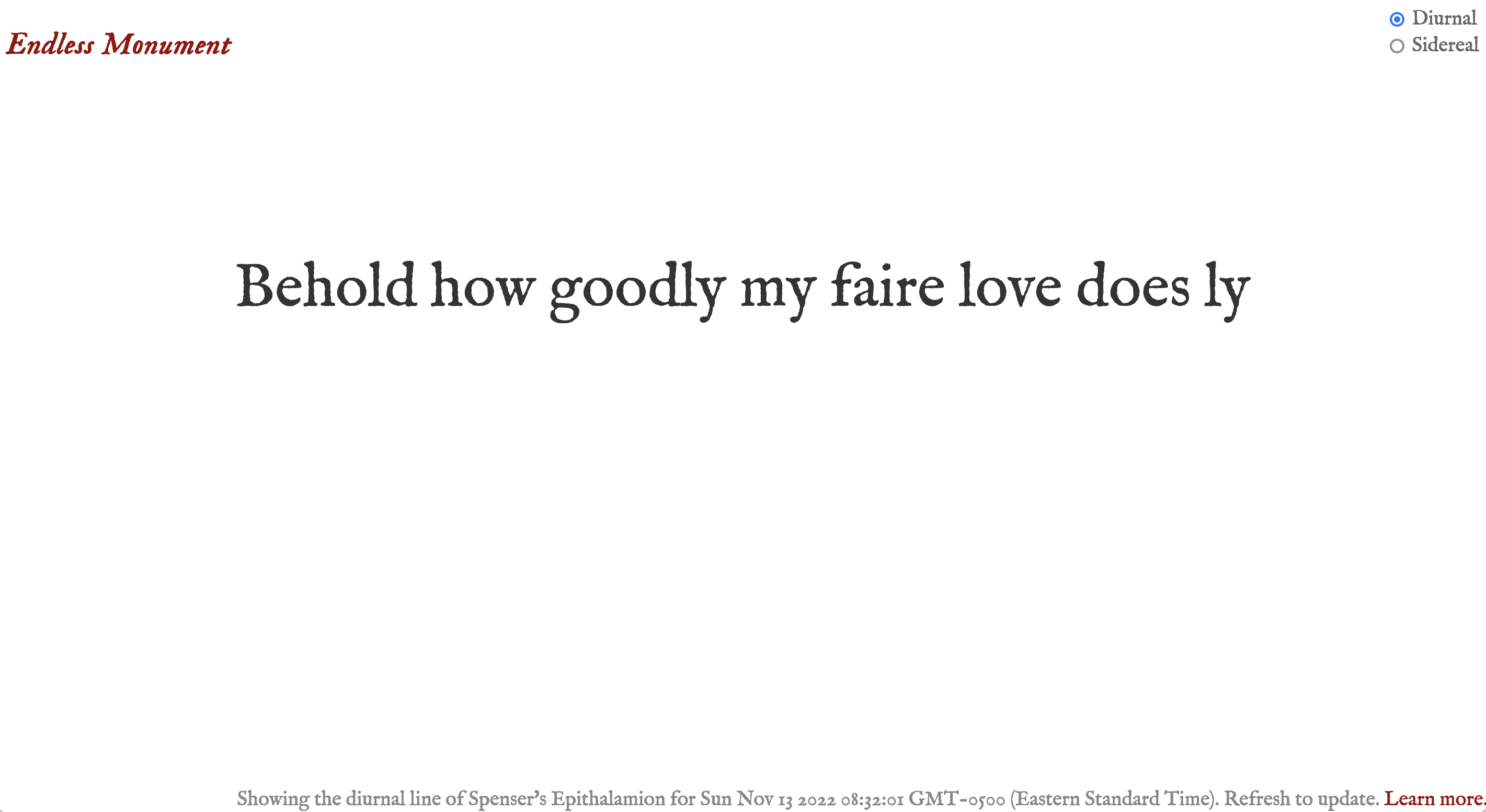Endless Monument is an experimental poetry project that displays Edmund Spenser's Epithalamion one line at a time. It began as a Twitter bot in 2014 and has since moved to its own webpage:
Spenser published the Epithalamion---the word is a riff on epithalamium, a wedding poem---to commemorate his second marriage to Elizabeth Boyle on 11 June 1594. He embued the verse with a complex time-scheme that wasn't fully discovered until the 1960s. Here's what he did:
- There are 365 long lines in the poem, for each day of the year.
- There are 24 stanzas, for each hour in the day.
- There are 16 "daylight" stanzas and 8 "nighttime" stanzas (Spenser signals this in the final line of each stanza). This mirrors the amount of daylight in Kilcolman, Ireland on 11 June 1594, St. Barnabas's Day.
- Without the final stanza, there are 359 long lines in the poem, representing sidereal time, rather than typical solar or diurnal time.
- If we begin the year, as Spenser would have, on March 1st, then the line corresponding to the day of the marriage reads: "But let this day let this one day be myne."
It's difficult to appreciate all this when reading the poem in a single sitting. Endless Monument follows Spenser's time-scheme to deliver the poem to the reader one line at a time over the course of a year. Here's how the site interprets the poem:
- Beginning with line one on March 1st, the site displays a single line each day, corresponding to the day it represents in the poem.
- The line switches over at the time it signifies in the poem, beginning with line one at midnight. The time will be different depending on where you are when you load the page. So as of this writing (mid-November) in my location (Pittsburgh), the line switches at around a quarter to five.
- Since the poem's short lines represent divisions rather than a set time, if a short line comes after the day's current long line, it will appear 15 minutes after the long line appears. The short line will remain until midnight and then disappear.
- The switch times are different whether you measure according to diurnal/solar or sidereal time. You can toggle between the two. Most of the time this will show the same line, but at rare moments the two will show different lines.
This plodding, even tedious, way of reading the poem is intended to bring out the encantatory nature of the poem's time scheme, which Spenser alludes to in the final stanza:
Song, made in lieu of many ornaments
With which my love should duly have bene dect,
Which cutting off through hasty accidents,
Ye would not stay your dew time to expect,
But promist both to recompens,
Be unto her a goodly ornament,
And for a short time an endless moniment.
